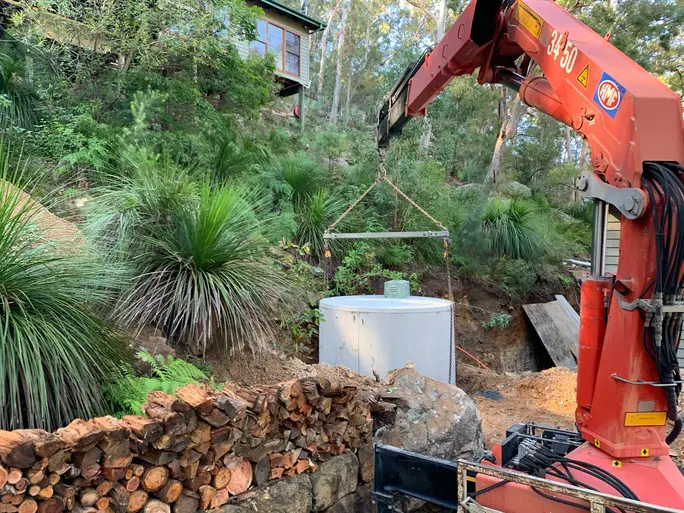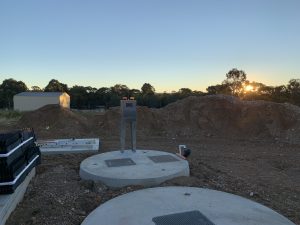Revitalize Your AWTS for the New Year: A Comprehensive Guide to Yearly Servicing
As we usher in a new year, it’s the perfect time to not only reflect on personal resolutions but also consider the well-being of your home, particularly your Aerated Wastewater Treatment System (AWTS). Annual servicing is a key aspect of maintaining a healthy and efficient AWTS, ensuring that it continues to operate seamlessly. In this comprehensive guide, we’ll explore the importance of yearly servicing, shedding light on the specific tasks involved and how they contribute to a fresh start for your AWTS in the new year. This guide is tailored for the average consumer, with a focus on the regional considerations that are pertinent to AWTS owners.
Understanding the Significance of Yearly Servicing
1. Prolonging System Lifespan:
Yearly servicing is akin to a health check for your AWTS. By addressing any potential issues early on, you contribute to the longevity of your system, avoiding premature wear and tear that could lead to costly replacements.

Optimizing System Efficiency:
A well-serviced AWTS operates at peak efficiency. Regular maintenance tasks, such as cleaning filters and inspecting components, ensure that the system functions optimally, providing effective wastewater treatment for your property.
Preventing Costly Repairs:
Yearly servicing is a proactive measure to catch minor issues before they escalate into major problems. This preventative approach can save you from unexpected and costly repairs, preserving your budget in the long run.
Ensuring Environmental Compliance:
Local regulations often require AWTS owners to comply with specific standards. Yearly servicing helps ensure that your system meets these standards, preventing potential legal issues and contributing to a healthier environment.
Preserving Property Value:
A well-maintained AWTS is an asset that adds value to your property. Regular servicing and a documented maintenance history can be appealing to potential buyers should you decide to sell your home in the future.
The Yearly Servicing Process: A Step-by-Step Guide
Comprehensive Inspection:
The servicing process typically begins with a thorough inspection of all AWTS components. This includes the septic tank, aeration unit, distribution system, and any additional features specific to your system.
Filter Cleaning:
Filters are integral to the proper functioning of an AWTS. Yearly servicing involves the cleaning or replacement of filters to ensure unimpeded wastewater flow and aeration.
Pump Check:
The pump is a critical component responsible for moving wastewater through the system. Yearly servicing includes a comprehensive check of the pump, ensuring it operates smoothly and efficiently.
Aeration System Assessment:
For systems with aeration units, a detailed assessment of the aeration system is conducted. This involves inspecting diffusers, blowers, and any associated components to maintain optimal performance.
Sludge and Scum Measurement:
Measuring the accumulated sludge and scum in the septic tank is crucial. Yearly servicing involves determining the levels of these materials and scheduling a pump-out if necessary.
Effluent Quality Analysis:
Assessing the quality of the treated effluent is vital for ensuring that your AWTS is effectively treating wastewater. Yearly servicing may include effluent testing to confirm compliance with environmental standards.
System Calibration (if applicable):
Some AWTS may have electronic components that require calibration. Yearly servicing may involve adjusting settings to maintain accurate system performance.
Vegetation Management:
If your AWTS is surrounded by vegetation, yearly servicing may include vegetation management to prevent root intrusion and ensure the unobstructed operation of the system.
Preparing for Your AWTS Yearly Servicing: A Checklist for Homeowners
Schedule in Advance:
Plan your AWTS servicing well in advance. This allows for a convenient time that aligns with low system demand and ensures the availability of service providers.
Gather System Records:
Collect all documentation related to your AWTS, including past servicing records and any issues you may have noticed. This information helps service providers understand your system’s history.
Clear System Access:
Ensure that service providers have clear access to all AWTS components. Trim overhanging branches or vegetation that may obstruct their work.
Be Prepared for Pump-Out:
If the sludge and scum levels in your septic tank are deemed high during servicing, be prepared for a pump-out. This is a routine part of maintaining the health of your AWTS.
Ask Questions:
Take advantage of the servicing visit to ask questions and gain insights into your AWTS. Understanding how your system works allows you to make informed decisions about its care.
Conclusion: A Fresh Start for Your AWTS in 2024
As you embark on a new year, consider making the resolution to prioritize the health of your Aerated Wastewater Treatment System through yearly servicing. This comprehensive guide has outlined the importance of this annual practice, detailing the benefits and specific tasks involved in the servicing process. By investing in the well-being of your AWTS, you contribute to its efficiency, longevity, and overall performance. With a fresh start for your AWTS in 2024, you can enjoy peace of mind, knowing that your wastewater treatment system is operating at its best, serving your household and the environment effectively.
For a Free Quote and Sizing on all Septic Tanks Made in Australia call the team at Eco-Septic on 1800 808 135
Related Posts
- How Often Should Pump Wells Cycle?
- Why is Wastewater Treatment Important?
- What are the New Technologies for Wastewater Treatment
- What Should You Know Before You Install A Septic Tank?
- What is a wastewater treatment plant?
- All You Need to Know About Septic Tanks in Sydney
- What is a home sewage treatment plant
- Can Treated Sewage Water Be Used For Irrigation?





